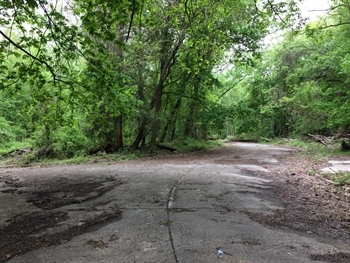
This Old Farm Colony on Staten Island in New York is about to get a new life
This year, the American Planning Association (APA) hosted its National Planning Conference in New York City. I was fortunate to attend and present our work on the Calumet Stormwater Collaborative as well as be a part of the national team launching APA’s new Water and Planning Network. (Quick aside, fellow planners I encourage you to get involved!)
During the conference I had the opportunity to attend a mobile workshop tour to learn about a creative initiative that is reimagining existing community assets in a way that pays respect to history and the natural environment, while also creating healthier communities. The tour was of two historic Staten Island sites undergoing major change—thanks to the proactive efforts of the New York City Economic Development Corporation (NYCEDC)—Sea View Hospital and the New York Farm Colony.
Staten Island—too often overlooked—is one of the five boroughs that make-up New York City. The borough is the third-largest in area at 58 square miles, but is the least populated with a 2010 Census population of 468,730 people. Staten Island residents continue to suffer one of the longest commute times in the country as more than one-third of resident’s face an hour or more commute each way. They also aren't living as long as most residents in the other four boroughs—in 2009, it had the highest death rates per 100,000 people among the five boroughs for heart disease, cancer, pneumonia and chronic lower respiratory disease. Yet Staten Island has the most space per capita and quite a bit of woods and greenery...what to do?
Enter some history and a new vision for vacant property that intersects public health and urban planning.
The Hospital

Vacant, historic building in hospital complex
Named for its hilltop views of the water and abundant open space, Sea View Hospital Tuberculosis Campus opened in 1923. The 25-acre estate was the largest and most costly municipal facility for the treatment of tuberculosis of its time in the U.S., when there was no known cure for the disease other than a “treatment” recommendation of fresh air, rest and a nutritious diet. The hospital complex included residential facilities, research laboratories, operating pavilions, an auditorium and even a community farm.

The old Children's Ward at Sea View during the height of TB
While some buildings are restored and in use today—including one for a ballet company and one for a theatre company (yay!)—the overall campus has been long underutilized. Today the NYCEDC and its partners are restoring the legacy of the Sea View Hospital Campus—now referred to as the Sea View Healthy Community—by building a mixed-use, health-focused wellness campus integrating medical care, housing, retail, community facilities and open space in a setting designed to promote healthy lifestyles.

Dance company in residence
The Farm

Vacant, historic farm colony property
Adjacent to the hospital grounds is the New York City Farm Colony, which was originally developed in the 1800s as the Richmond County Poor Farm. The 45-acre colony, which provided room and board to socially vulnerable populations in exchange for their labor has been vacant since 1975.

Old roads and woods on the farm colony
In 2013, the NYCEDC and its partners began to envision the redevelopment of the site as an age-restricted residential community with new open space, restored native landscapes and landmark buildings and new retail. Landmark Colony (as it is now called) is leveraging the site’s extraordinary natural and historical context to provide extensive public open space for community events and respectful adaptive reuse of historic assets. The development will contain approximately 350 residential units, and will serve both residents and the public with interconnected trails and paths for pedestrians and cyclists, a community greenhouse and outdoor gardens inspired by the farm colony's legacy.

Abandoned building on the farm colony
While the cure for tuberculous exists today, a century later, our collective communities are battling a new epidemic—chronic diseases like diabetes and heart disease that are often tied to our environment and lifestyle. These re-envisioned sites on Staten Island represent 70 acres that will provide much needed local wellness and recreational amenities, unmet demand for affordable housing and accessible community-oriented retail. A triple win for listening and acknowledging the needs of a community while still preserving historic landmarks and a beautiful, wooded environment with much to offer everyone. This is the kind of equitable planning we can be proud of!